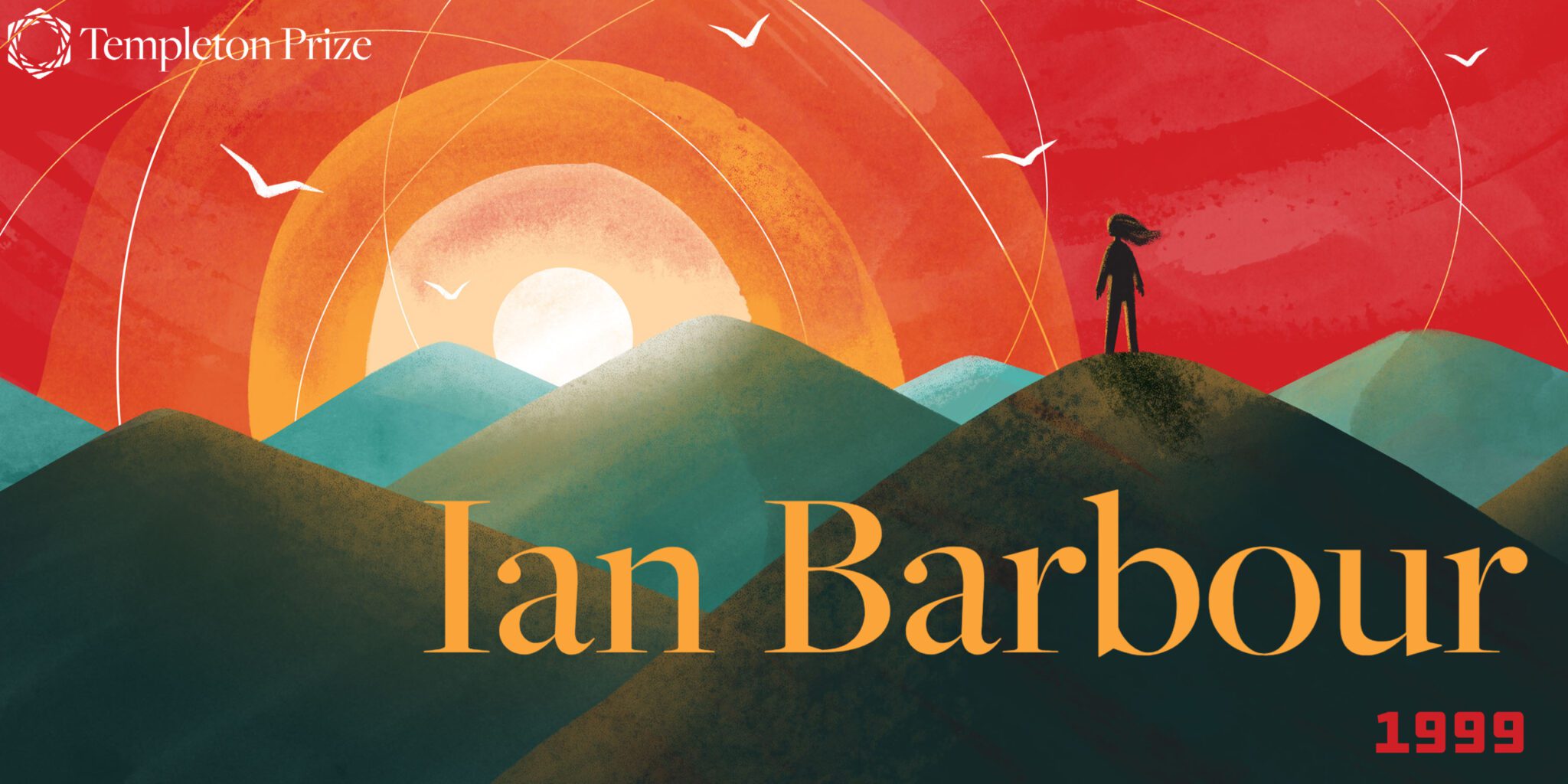In 1973, the first Templeton Prize was given to Mother Teresa. In 2023, we celebrate the 50th anniversary of this award. Over the next 52 weeks, we will highlight each of our laureates and reflect on their impact on the world. From humanitarians and saints to philosophers, theoretical physicists, and one king, the Templeton Prize has honored extraordinary people. Together, they have pushed the boundaries of our understanding of the deepest questions of the universe and humankind’s place and purpose within it, making this (we humbly think) the world’s most interesting prize.
Ian Barbour was one of the world’s pioneers in the integration of science and religion. As a physicist, theologian, and philosopher, he sought to bridge the gap between these seemingly disparate realms, sparking a transformative dialogue that continues to shape the discourse on science, ethics, and spirituality.
Born in Beijing, China on October 5, 1923, Barbour was the middle child of missionaries; his mother was an American schoolteacher, and his father was a Scottish geologist. His exposure to different cultures and religious traditions forged an early fascination with both science and religion, which would later influence the trajectory of his life and work.
Barbour received a degree in physics from Swarthmore College in Pennsylvania in 1943, and afterwards served in the Civilian Public Service during World War II. Following the war, he initially enrolled at Duke University to further pursue his passion for physics, but completed his Ph.D. at the University of Chicago in 1950 where he worked with Dr. Enrico Fermi, the creator of the world’s first nuclear reactor. He then spent four years teaching physics at Kalamazoo College, where he experimented with cosmic rays.
Throughout his scientific endeavors, Barbour began to contemplate the interconnections between science and religion. His interests in ethical implications, metaphysical questions, and the philosophical foundations of both fields flourished. This led him to obtain a Master of Divinity degree from Yale Divinity School, and in 1955, he was hired to teach physics and religion — though in separate classes — at Carleton College in Minnesota. This was a crucial turning point that propelled him into a lifelong quest for reconciling the apparent conflicts between science and religion.
Barbour’s groundbreaking work culminated in his seminal book, Issues in Science and Religion (1966), which laid the foundation for his influential Gifford Lectures, delivered at the University of Aberdeen in 1989. In these lectures, later published as Religion in an Age of Science (1990), he articulated four primary ways of approaching the relationship between science and religion: conflict, independence, dialogue, and integration.
Arguing against the idea of inherent conflict between science and religion, Barbour advocated for dialogue and integration.
He believed that both domains could inform and enrich one another, fostering a more comprehensive understanding of reality. His concept of “critical realism” emphasized the need for humility in both scientific and religious inquiries, acknowledging the limits of human knowledge and the complexity of existence.
In 1999, Barbour was awarded the Templeton Prize for launching a new era in the interdisciplinary dialogue between science and religion and for becoming one of the world’s most forceful advocates for ethics in technology. A private ceremony was held at Buckingham Palace in London, presided by HRH Prince Philip, Duke of Edinburgh, followed by a public ceremony at the Kremlin in Moscow, Russia. The public ceremony was attended by Dr. John M. Templeton, Jr., and two previous Templeton Prize winners: Aleksandr Solzhenitsyn (1983) and Paul Davies (1995).
“Progress is needed in religion as in all other dimensions of human experience and endeavor. There has been a long departure, at least in Western culture, from the last synthesis when religious knowledge and scientific knowledge were organically related. It is imperative that progress in religion be accelerated as progress in other disciplines takes place. A wider universe demands deeper awareness of the dimension of the spirit and its spiritual resources available for people, of the immensity of God, and of the divine knowledge and understanding still to be claimed.”
— Ian Barbour
“Like many physicists, Ian Barbour has an interest in religious questions. Unlike most, this interest has led to serious study of theology, in his case, at Yale University. This study has made possible a career in both fields with a special focus on their relations. This is the topic on which he has made the most significant contributions. In making these contributions, he emphasizes how tentative our knowledge is, how much there is to learn through the discoveries of science and how these discoveries lead one who is open to genuine mystery to discover the God “who would be known.”
— Dr. John M. Templeton, Jr.
Still Curious?
Learn more about 1999 Templeton Prize laureate Ian Barbour.
